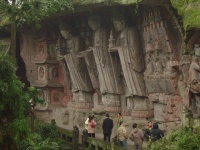Huayan zong: Unterschied zwischen den Versionen
Adm1 (Diskussion | Beiträge) |
Adm1 (Diskussion | Beiträge) |
||
| Zeile 22: | Zeile 22: | ||
* Wiki über [https://de.wikipedia.org/wiki/Huayan_zong Huayan zong] | * Wiki über [https://de.wikipedia.org/wiki/Huayan_zong Huayan zong] | ||
* [http://www.bodhicitta.net/In%20Praise%20of%20the%20Dharmadhatu.htm IN PRAISE OF THE DHARMADHATU, Arya Nagarjuna] | * [http://www.bodhicitta.net/In%20Praise%20of%20the%20Dharmadhatu.htm IN PRAISE OF THE DHARMADHATU, Arya Nagarjuna] | ||
<br> <historylink type="back" style="font-family: Arial, Helvetica, sans-serif; | |||
font-size: 14px; color: #ffffff; padding: 4px 8px; float:right; | |||
background: -moz-linear-gradient( top, #fcf9fc 0%, #6a75eb); | |||
background: -webkit-gradient( linear, left top, left bottom, | |||
from(#fcf9fc), to(#6a75eb)); | |||
-moz-border-radius: 30px; -webkit-border-radius: 30px; | |||
border-radius: 30px; border: 3px solid #ffffff; | |||
-moz-box-shadow: 0px 3px 11px rgba(240,237,240,0.5), | |||
inset 0px 0px 1px rgba(000,145,255,1); | |||
-webkit-box-shadow: 0px 3px 11px rgba(240,237,240,0.5), | |||
inset 0px 0px 1px rgba(000,145,255,1); | |||
box-shadow: 0px 3px 11px rgba(240,237,240,0.5), | |||
inset 0px 0px 1px rgba(000,145,255,1); | |||
text-shadow: 0px -1px 0px rgba(000,000,000,0.2), | |||
0px 1px 0px rgba(255,255,255,0.3);" | |||
> zurück </historylink> | |||
[[Kategorie:Buddhismus]] | |||
Version vom 24. September 2013, 15:39 Uhr

Die Huayan zong (chinesisch Huāyán zōng; W.-G. Hua-yen tsung; Sans.: Avatamsaka), auch als Hua Yen - Schule oder Blumengirlande-Schule bezeichnet, war eine im 7. Jahrhundert gegründete Schule des chinesischen Buddhismusses.
Die Schule hatte 5 Patriarchen, ging aber im Kaiserreich des 10. Jahrhunderts unter und gelangte unter der Bezeichnung Hwaeom jong nach Korea und dann weiter nach Japan, wo sie die Bezeichnung Kegon-shū annahm aber heute keine Bedeutung mehr hat.
Ihre Grundlage bildete das Avatamsaka Sutra oder Buddhavatamsaka-Sutra ( chin. Huayan jing ) und dessen interpretation (Huayan lun) sowie die Philosophie der Madhyamika und des Vijnanavada.
Das Huayan lehrt die 4 Dharmadhatu (dharmadhātu-pratītyasamutpāda), die vier Möglichkeiten, die Wirklichkeit zu sehen:
- Alle Dharmas sind als besondere getrennte Ereignisse gesehen
- Alle Eregnisse sind ein Ausdruck der absoluten
- Ereignisse und Wesen(Essenz) durchdringen sich gegenseitig
- Alle Ereignisse durchdringen sich
Literatur
- Garfield, Jay L.; Edelglass, William (2011), The Oxford Handbook of World Philosophy
Weblinks
<historylink type="back" style="font-family: Arial, Helvetica, sans-serif;
font-size: 14px; color: #ffffff; padding: 4px 8px; float:right;
background: -moz-linear-gradient( top, #fcf9fc 0%, #6a75eb);
background: -webkit-gradient( linear, left top, left bottom,
from(#fcf9fc), to(#6a75eb));
-moz-border-radius: 30px; -webkit-border-radius: 30px;
border-radius: 30px; border: 3px solid #ffffff;
-moz-box-shadow: 0px 3px 11px rgba(240,237,240,0.5),
inset 0px 0px 1px rgba(000,145,255,1);
-webkit-box-shadow: 0px 3px 11px rgba(240,237,240,0.5),
inset 0px 0px 1px rgba(000,145,255,1);
box-shadow: 0px 3px 11px rgba(240,237,240,0.5),
inset 0px 0px 1px rgba(000,145,255,1);
text-shadow: 0px -1px 0px rgba(000,000,000,0.2),
0px 1px 0px rgba(255,255,255,0.3);"
> zurück </historylink>